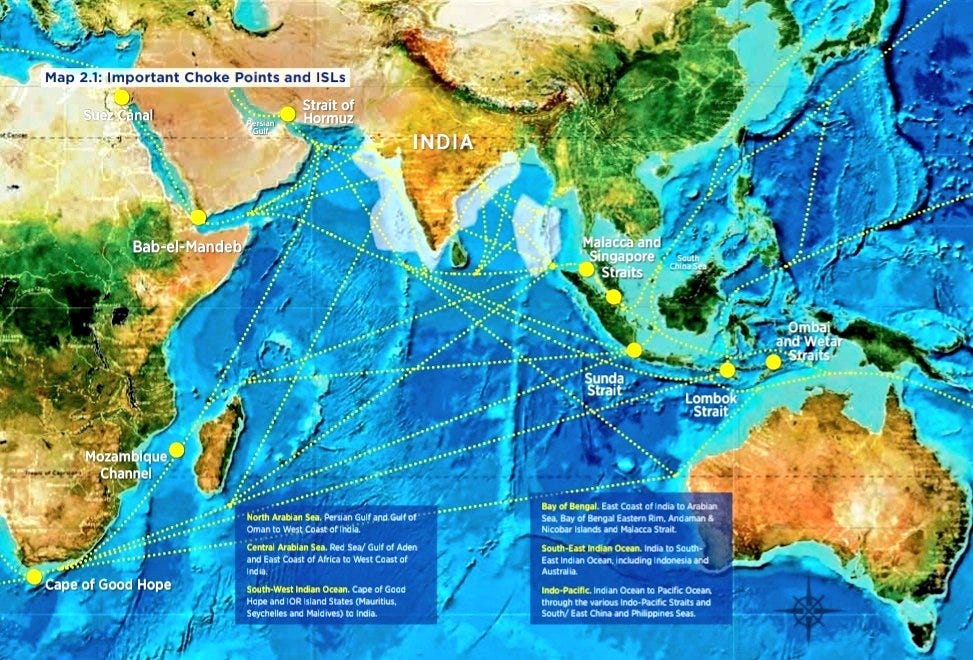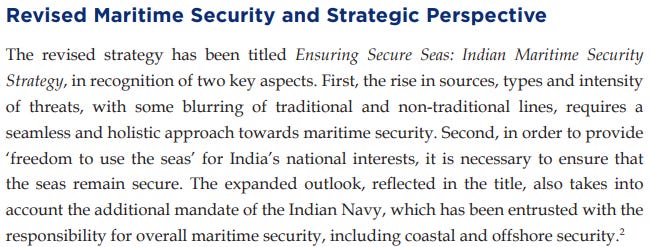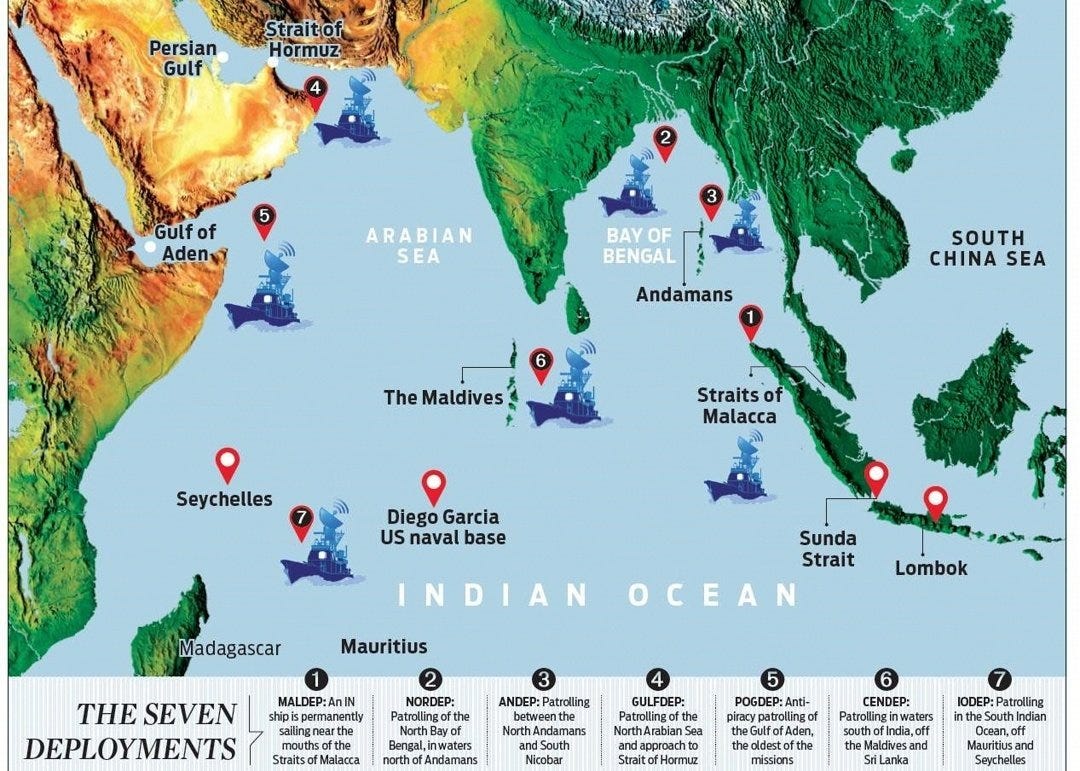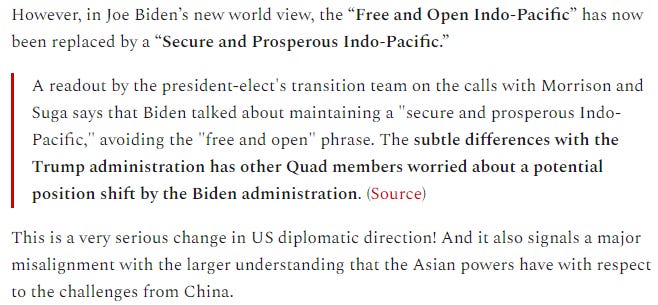Insightful newsletter of Drishtikone: Issue #185 - the Indian Ocean and Global Trade
Indian Ocean Region is at the heart of global trade. Dominance over it is the aim of many powers. A detailed evaluation.
Photo by Joshua Koblin on Unsplash
“They who can give up essential liberty to obtain a little temporary safety deserve neither liberty nor safety.” ― Benjamin Franklin, Memoirs of the life & writings of Benjamin Franklin
On the spiritual path of seeking the Truth, either you are engulfed in the darkness of ignorance or you are realized. The realm of belief is for idiots who are ignorant but are just too self-obsessed to admit that they are. So they make up a story.
Either you are in the presence of Sun and all lighted up. Or you are in a cave in complete darkness.
To come up with theories of belief or non-belief in the Sun is the preserve of imbeciles. But that is precisely where most of the world is. The only reason for the existence of the population in this asylum is considered normal is that there are so many there.
That is why we want to look at things happening around us in more detail based on facts. Something that no one in the mainstream media wants to do today. The brain-washed drunk on “morality” and “ethics” kool-aid want balanced opinions. Facts have no truck with any side. They state things the way they are.
Once you know the facts, then either you are with yourself or against. Either way, there are consequences. Consequences do catch up. The ignorant pave the way for their own annihilation, while the aware thrive.
Remember, in the 1940s Lahore and Karachi were two of the most cosmopolitan and advanced cities in India. Yet, when madness took over, Hindus and Sikhs from our own families had to kill (behead, shoot, stab, drown) their own daughters, wives, sisters, and mothers. So, if you think those things do not happen in “my city”, think again!
The result of ignorance is annihilation. And, not in a spiritual way of things.
the criticality of the Indian Ocean Region and why Joe Biden’s stance will hurt India’s security
The Indian Ocean Region (IOR) is the crucial area of global maritime defense activity. It is a critical corridor that links the Middle East, Europe, Africa, South Asia, and Southeast and Northeast Asia.
Home to almost 2.7 billion people, its total activity comprises:
half of the world’s container ships
one-third of the world’s bulk cargo traffic
two-thirds of the world’s oil shipments
Whoever controls this region controls the pulse of global trade. Over the last many years, India and the US have been the major actors in this theater. China has been using its naval presence combined with its “debt-trap diplomacy” to get a foothold in this area.
China has significantly expanded its engagements in the Indian Ocean region over the past three decades, raising fears among American and Indian strategists that its growing naval presence, together with its use of so-called “debt-trap diplomacy,” might provide it with meaningful military advantages far from its shores.(Source)
To understand the interest in the Indian Ocean, it is imperative to understand the importance of what makes it critical to world trade. Let us see the main choke points in the Indian Ocean region and what closure of any one of them can do?
The most important ‘choke points’ for maritime movement in the Indian Ocean Region are:
Straits of Malacca and Singapore: they link the South China Sea and the Pacific Ocean, thus providing the shortest sea route from the Persian Gulf states to East Asia and the West Pacific areas. Over 70,000 ships go through it and the EIA estimated that 15.2 million barrels of oil a day passed through the strait. It is a major choke point. At its narrowest, it is mere 1.5 nautical miles wide navigable stretch (Philip Channel in Singapore Strait) [15.2 million barrels of oil per day]
Sunda Strait: This is an alternative to the Malacca and Singapore Strait. It is 50 nautical miles long and 15 nm wide (North-East entrance). Not preferred by ships due to navigational issues, depth restrictions, and strong currents.
Lombok Strait: This is an alternative passage between the Indian and the Pacific oceans. Larger ships prefer this route.
Ombai and Wetar Straits: Another alternative to Malacca and Singapore Straits. This is between Timor islands and Wetar. It is not preferred by ships. Used mostly by submarines.
Cape of Good Hope: Shouldn’t be a chokepoint generally, but the cost-benefit and the unfavorable ocean situation keep ships close to the coast. Used by ships not able to pass through the Suez Canal [4.9 million barrels of oil per day]
Mozambique Channel: It is 1000 nm long and 250 nm wide. Not used much since the Suez Canal.
Bab-el-Mandeb: is 17 nm wide that connects the Gulf of Aden with the Red Sea and the Suez. This is a major choke point for any flow from the Arabian Sea to the Red Sea, leading to a significant increase in the ship/tanker capacities through other choke points. [3.8 million barrels of oil per day]
Suez Canal: It is a 105 nm long corridor between Europe and Asia. If this was to ever close the maritime traffic will have to go around the Cape of Good Hope. Distance between Mumbai and London via Suez is 6200 nm, while around Cape of Good Hope it is 10,800 nm. [3.2 million barrels of oil per day]
Strait of Hormuz: It connects the Persian Gulf to the Gulf of Oman and the Arabian Sea. 30 nm in width. There is no alternative to this. It is by far the greatest choke point in the world! This strait has 17 million barrels of oil passing through each day, which is 35% of all global oil trade by sea. [17 million barrels of oil per day]
The Indian Navy came out with its maritime strategy titled - “Ensuring Secure Seas: Indian Maritime Security Strategy.” It was an update to the previous one which was titled - “Freedom to Use the Seas: India’s Maritime Military Strategy.”
One can judge from the titles itself how the Indian Navy’s attitude transformed from one requesting a role in the seas to a more proactive role of dominating to secure the areas.
The protection of sea lines of communication (SLOCs) is critical. This is to ensure “continuity in military reach, national trade and insulate the economy from the direct consequences of war.”
One of the consequences of the MSS has been to deploy Indian Navy presence along the major chokepoints.
The Indian deployments, therefore, are at the following points:
Strait of Malacca
Bay of Bengal
Andamans
Strait of Hormuz
Gulf of Aden
Between the Maldives and Sri Lanka
Near Mauritius and Seychelles
The map below illustrates the deployments.
Yesterday we had discussed how Joe Biden’s vision of the Indo-Pacific is like a U-turn and will essentially lead to capitulation of US power to the Chinese dominance in this critical area.
You see, it has taken a lot of effort by the Modi Government to fight the maritime threat from China. That is why the QUAD became so important. By joining hands with Vietnam, Indonesia, Australia, and Japan, India had virtually caught China by its throat!
This change in the stance by the US, where it will allow China space in this region will hurt India’s security interests in a very big way!
news focus versus events - a disconnect
The news industry is strange these days. It has more to offer in terms of outrage and political discourse as opposed to what is really impacting society at a certain point in time. Here is an interesting chart on how the news articles in the New York Times on COVID synch up with the numbers of daily cases in the US for COVID.
Of course, the following factors would have played a role:
More awareness of the pandemic and people factoring in the challenges
Elections are over and pandemic reporting is no longer politically important
The health crisis may still be there but the reaction of the administrations around the globe has come down.
The societies have moved away from lock-downs and curfews to normal work (with precautions). Society no longer views it as a major threat.
![r/dataisbeautiful - How news of the coronavirus changed over the course of the pandemic [OC] r/dataisbeautiful - How news of the coronavirus changed over the course of the pandemic [OC]](https://substackcdn.com/image/fetch/w_1456,c_limit,f_auto,q_auto:good,fl_progressive:steep/https%3A%2F%2Fbucketeer-e05bbc84-baa3-437e-9518-adb32be77984.s3.amazonaws.com%2Fpublic%2Fimages%2Fe6ed0621-a273-4e5d-a7f2-aa6e1d625334_960x799.png)
It would be interesting to see similar charts in terms of terrorism and the reaction of different media houses as well as politicians.
market corner - 10 quick bytes
RCEP could have hurt Indian economy; fair, balanced trade required: S Jaishankar - more
L&T bags another big contract from Mumbai-Ahmedabad bullet train project - 17.2% of the total length - more
A majority of Indians (77%) are optimistic about an economic recovery and business revival, and 27% believe the turnaround could happen in the next three months and 71% of Indians keen on taking personal loans in the next 3 to 6 months - more
Moody's calls stimulus measures positive, revises GDP forecast upwards - more
GDP contraction likely to have narrowed to 9.5 percent in September quarter: ICRA - more
India set to attract Rs 10,000 cr for 1,000 LNG stations in three years - more
Monthly GST filing will not be necessary after the e-invoice system is in place: Finance secretary - more
Zerodha launches online platform for gifting stocks, ETFs, gold bonds - more
India at 77 in global bribery risk rankings, improves by one spot - more
ICICI Bank introduces ‘Cardless EMI’ facility - check the details - more
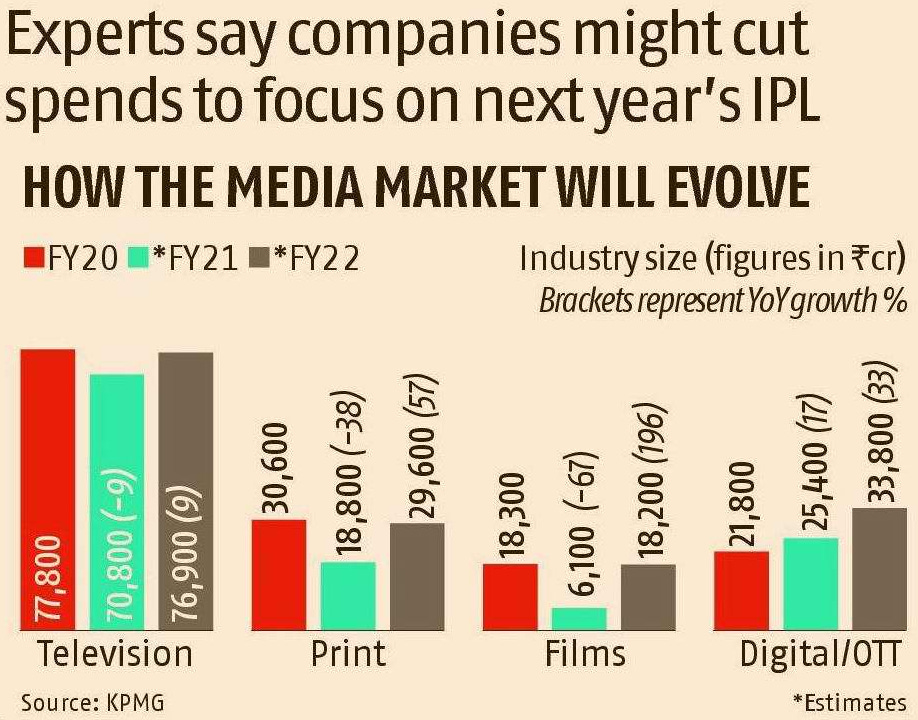
nota bene
Delhi HC rebukes AAP: The Aam Aadmi Party leadership was questioned for its delayed response to the increasing number of cases in Delhi. The Bench of Justice Hima Kohli and Justice Subramonium Prasad said that the Delhi government was sleeping over the surge and didn’t act in time. The court said that it was only after the judicial intervention that the Kejriwal government acted and decided to revise the number of guests attending weddings in the national capital. ‘You turned turtle’ remarked the court. (Source)
India to host Buddhist Studies conference: India will be hosting a major conference on Buddhist studies starting next year that will see the participation of Buddhist scholars from across the world. The annual event will be hosted by the Indian Council for Cultural Relations or ICCR. In response to a WION question, President of ICCR Vinay Sahasrabuddhe said, "This new initiative is about Buddhist studies. India is a major center for Buddhist studies, we have universities dedicated to Buddhist studies. and the world over scholars into Buddhist studies. India initiated a platform to bring all of them together is the need of the hour." (Source)
TMC burn BJP office: In a shocking incident, the BJP office in West Bengal’s North 24 Parganas district was set ablaze allegedly by Trinamool Congress workers on Wednesday night. According to the reports, the BJP office in the Babanpur area of Mohanpur Gram Panchayat was burnt down last night. The BJP workers alleged that TMC is behind the incident and it is using cheap tricks as they are scared of the BJP. (Source)
Upheaval within Facebook’s ranks?: An open letter to Facebook leadership from its content moderators has provided fascinating details regarding the discontent brewing among the workers, who were allegedly forced to return to office spaces amid the coronavirus pandemic. Over 200 Facebook content moderators from across the world have questioned the decision of the social media giant to force them back to the office, despite the risks of contracting coronavirus. (Source)
Soldier in the lake: More than 500 years ago, a medieval soldier's dead body settled at the bottom of a Lithuanian lake, and for centuries it lay hidden beneath the mud. Now, those submerged remains have finally been found. The skeleton was discovered during an underwater inspection of the old Dubingiai bridge in eastern Lithuania's Lake Asveja. (Source)
Bomber for a century: The U.S. Air Force’s fleet of B-52H heavy strategic bombers are on track to becoming a fleet of flying centenarians. The service wants to purchase over 600 new engines for its B-52s, ensuring that the “Big Ugly Fat Fella” can fly on to 2050 or later. This will practically ensure that some bombers, delivered in the early 1960s, will still be dropping bombs in the early 2060s. (Source)
the mind-boggling engineering of Angkor Wat?
Unfortunately, no one wants to look at the historical but religious structures in detail and any seriousness. We are looking at absolute miracles but we simply walk past them or see through them.
Even basic common sense is absent in most of the historical and sociological work.
People like Praveen Mohan are those who look at things and ask the obvious questions which have a lot to reveal!
Check this video out. He has others on Angkor Wat as well which are worth watching.
Accurate Alignment of Angkor Wat! - https://youtu.be/ugpPeoK7nzw
Hoysaleswara Temple built with Machines? - https://youtu.be/qPn0NsZDtkk
EVERY INCH of Angkor Wat has a SECRET! - https://youtu.be/C-3_QXV3-w0
Very very interesting watch!
Today’s ONLINE PAPER
Check out today’s “The Drishtikone Daily” edition.
Support Drishtikone
If you consider our work important and enriching and would like to contribute to our expenses, please click on the button below to go to the page to send in your contribution. You can select the currency (for example, INR or USD, etc) and the amount you would like to contribute.
If you like this post - please share it with someone who will appreciate the information shared in this edition -
If you like our newsletter, please share it with your friends and family -





